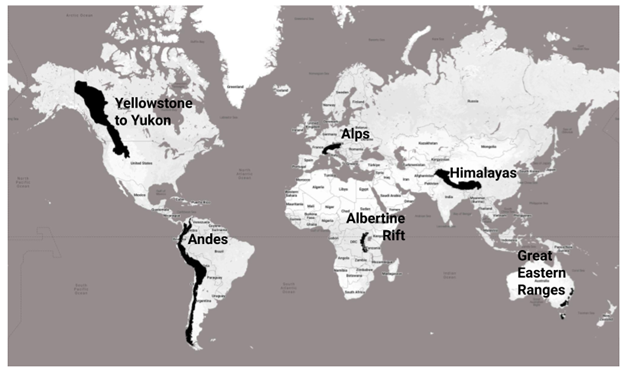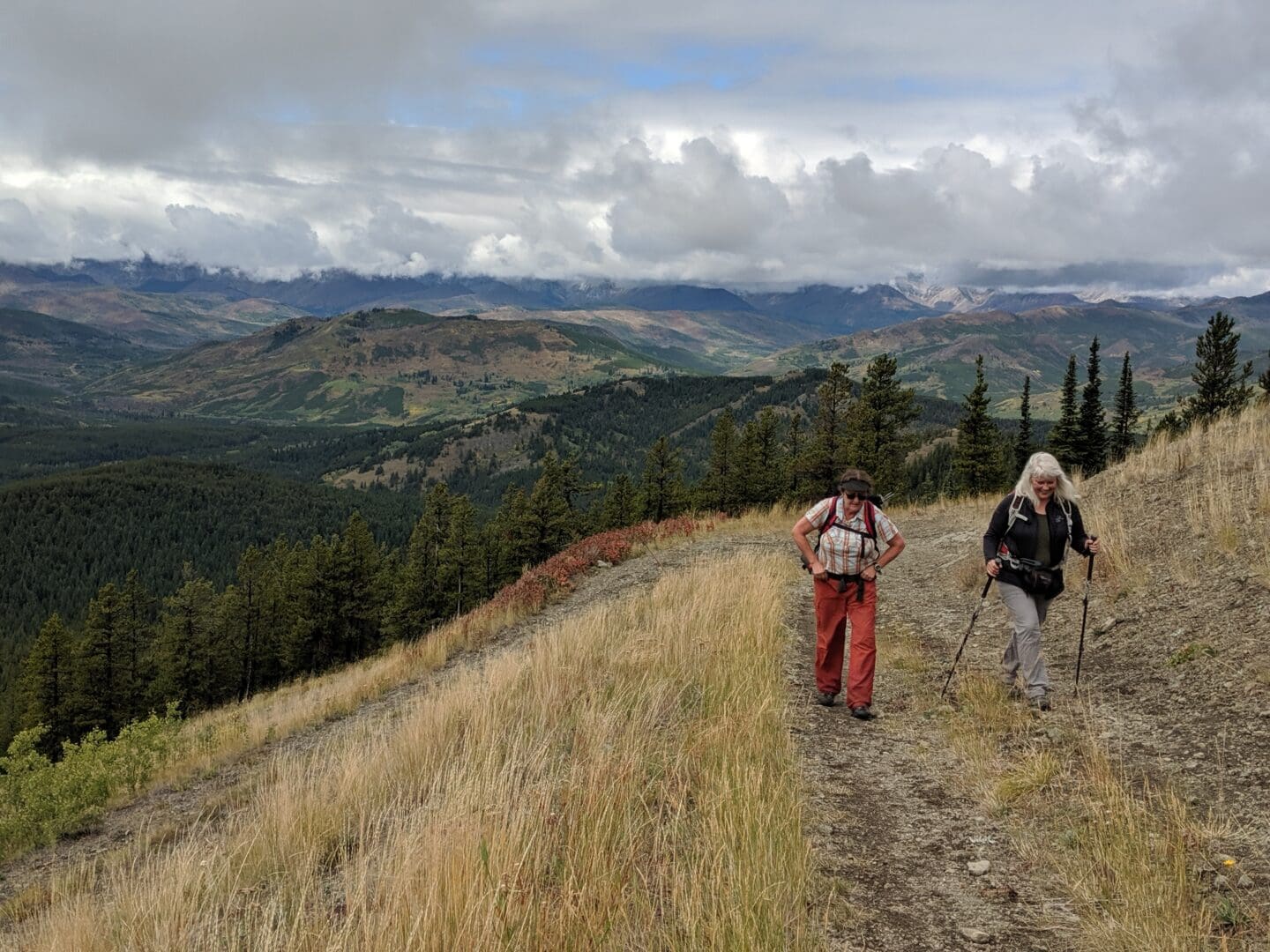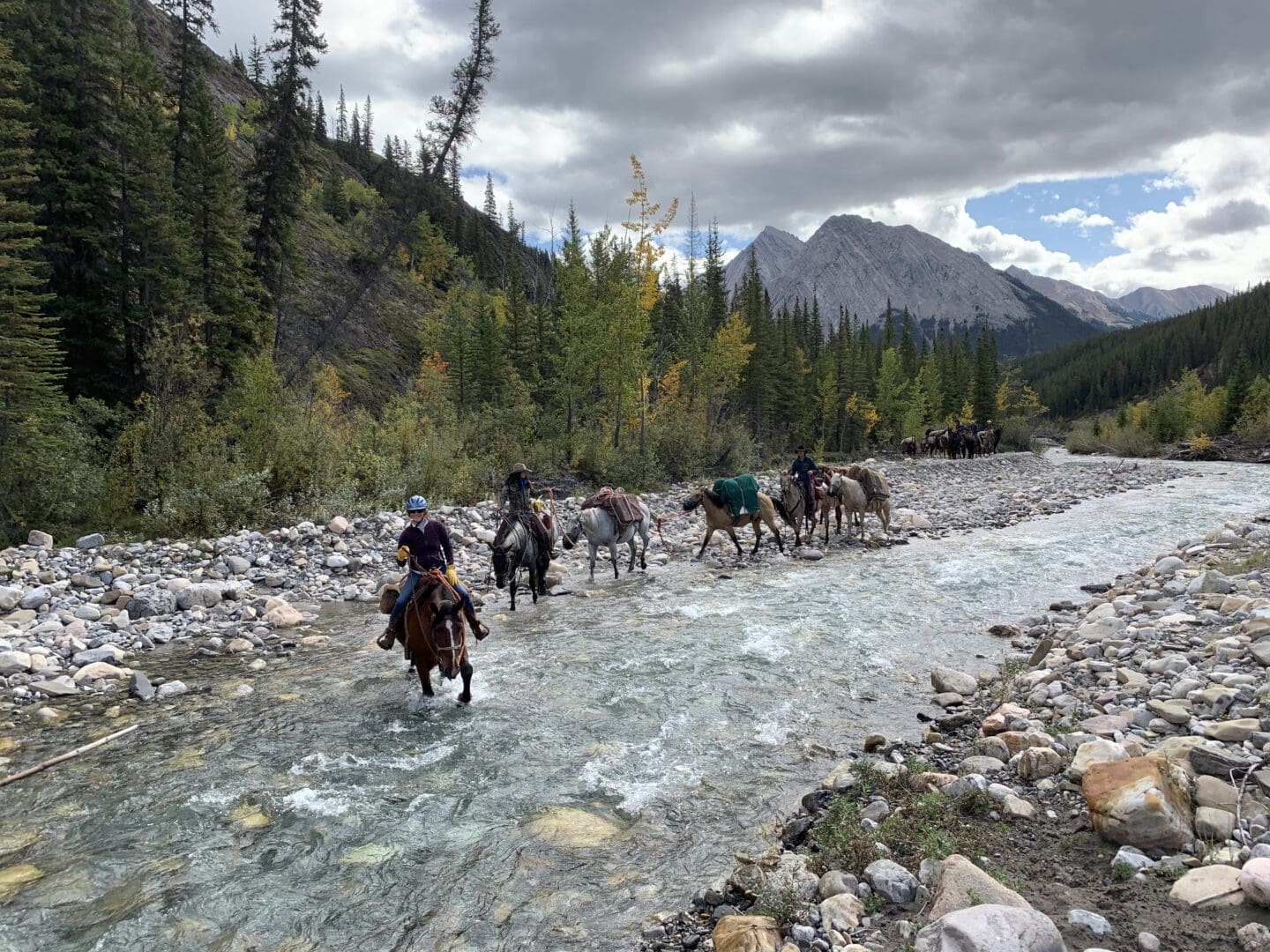Research reveals the Yellowstone to Yukon region along the Rocky Mountains is the world’s most intact and least developed mountain system, emphasizing its crucial role in conserving biodiversity and supporting human well-being.
Mountains are not only critical for conserving biodiversity but also ensuring human well-being. Now, new research shows North America is home to the world’s most intact, least developed mountain system.
A new paper highlights the 3,400-kilometer-long (2,100 miles) Yellowstone to Yukon region up the spine of the Rocky Mountains among the few remaining large mountain areas of connected habitat left on Earth.
Yellowstone to Yukon Conservation Initiative (Y2Y) is excited to share findings from a new research paper led by David Theobald at Conservation Planning Technologies, Evaluating ecosystem protection and fragmentation of the world’s major mountain regions.
This paper, published in Conservation Biology, significantly advances our understanding of conserving large landscapes and provides valuable insight into gaps in protecting nature.
This innovative research looked at the six largest continuous mountainous regions on each continent outside of Antarctica, including Africa’s Albertine Rift, Europe’s Alps, South America’s Andes, Australia’s Great Eastern Ranges, Asia’s Himalayas, and the Yellowstone to Yukon region in North America’s Rockies.
Of the six study areas, the Yellowstone to Yukon region stands out as the one with the lowest levels of human modification and the highest levels of intact, or “wild” landscapes, with minimal fragmentation. Yet, at 15.6 per cent, this region falls short in terms of the amount of landscape protected.

The research looked at four factors:
- how much human modification occurs across each mountainous region, and how it compares to the global average;
- how fragmented ecosystems are due to human modification;
- how much of each mountainous region is protected relative to the target of 30 per cent protection by 2030, and;
- if protected areas represent the diversity of ecosystems within the mountainous regions.
“Our research reveals that large mountainous regions have important differences in how much humans have changed and fragmented them, in addition to the degree to which they are protected,” says Dr. David Theobald, lead author.
“Within each mountainous region, we need to safeguard those untouched ecosystems, focus protection on ecosystems that are under-represented, and connect ecosystems within mountainous regions for enduring conservation.”
Other key findings:
- Mountains are often thought to be less impacted by people and to contain more protected areas. But this research shows about half of the mountain lands studied have been impacted by human activities: a number that matches the global average.
- Globally, fragmentation has degraded the ecological integrity of some mountain ecosystems by up to 40 per cent.
- Just two of the six mountainous regions studied currently meet 30×30 protection standards. The Yellowstone to Yukon region is currently only 15.6 per cent protected. With other terrestrial areas of the U.S. and Canadian protected areas at around 12 per cent, the Yellowstone to Yukon region is higher, but still short of the Global Biodiversity Framework goal to protect 30 per cent of the world by 2030 on the way to protecting what is required to stem the loss of biodiversity.
The findings underscore the need to protect large intact landscapes including representing the diversity of ecosystems within them, and the research can inform conservation planning and decision-making.
Increasing protection across the diversity of ecosystems in mountains is an urgent need in a world dealing with the combined impacts of current land use and climate change on wildlife, as mountain regions and species within them tend to be very vulnerable to change.

“In today’s world, there is increasing recognition of the need to keep large intact ecosystems in place and rewild key areas,” says Dr. Jodi Hilty, co-author and president and chief scientist of the Yellowstone to Yukon Conservation Initiative.
“What this research shows is that the Yellowstone to Yukon region is a global gem, and that Canada and the U.S. should prioritize protecting it. For more than 30 years we’ve been working with several hundred partners to connect and protect this region. Wouldn’t it be fantastic if this gem were prioritized to achieve the 30 per cent protection that communities in the area are already asking for? We have made immense progress together and have further to go. Our mandate is to ensure this stronghold stays resilient in the decades to come. This model can inspire and catalyze the rest of North America and the world.”
“What this research shows is that the Yellowstone to Yukon region is a global gem, and that Canada and the U.S. should prioritize protecting it.”
Dr. Jodi Hilty
This research also shows that when we carefully measure how healthy ecosystems are and how much they are affected by human activities, we can determine how well we are meeting conservation goals.
“Essentially, this work provides us with a clearer global picture and more information to make better decisions for conserving mountain ecosystems,” says Theobald.
Read the paper in Conservation Biology now: Evaluating ecosystem protection and fragmentation of the world’s major mountain regions.


